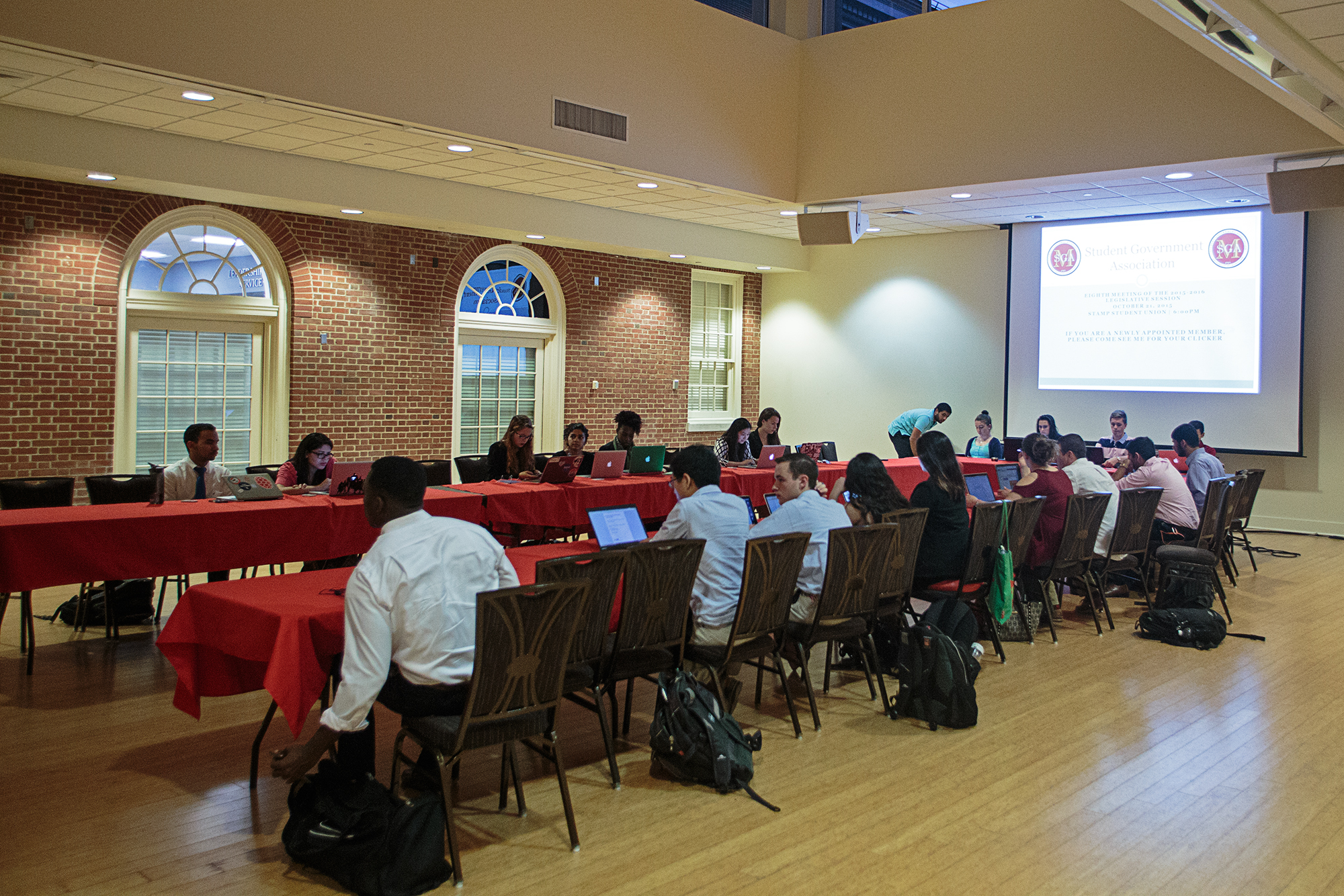The SGA passed a resolution Wednesday to declare its support for the University of Maryland Strategic Partnership Act of 2016, which would integrate the University of Maryland and the University of Maryland, Baltimore into one institution.
The vote was 17-0 with no abstentions.
Student Government Association President Patrick Ronk wrote the SGA bill in an effort to demonstrate this university’s support for the state bill, which was proposed last week. He said there was virtually no resistance within the SGA.
“I wanted the SGA to take an initial stance on the bill,” Ronk said. “Honestly, I haven’t had a single student really come up to me and say it’s a bad idea.”
Ronk will testify on behalf of this university at the state bill’s hearing Tuesday.
“I always like when I testify on bills that the SGA supports it,” he said. “It means that the student body supports it.”
If passed, the bill would bring the Baltimore campus’s law school, medical school and dental school into the combined institution, putting this university in line with other Big Ten universities, all of which are united with their medical and law schools.
The institutions would have separate presidents under the bill, but if one president steps down, the bill allows the University System of Maryland Board of Regents to consider appointing a single president for both institutions.
The two institutions are currently connected under MPower, a 2012 initiative that linked this university’s public health school and law programs with the University of Maryland School of Medicine and the Francis King Carey School of Law.
“A lot of people don’t even know we aren’t the same school as the University of Maryland, Baltimore,” Ronk said.
MPower led to the launch of the Justice and Legal Thought track within College Park Scholars as well as the creation of a law and society minor at this university, both housed under the MLAW program.
“MLAW was the result of that collaboration. That’s what was created to be the catalyst for programming between undergrad students and the law school, and it’s worked out very, very well,” said Robert Koulish, director of MLAW Programs.
Through MLAW, undergraduate students have had access to resources from the Carey School of Law, including guest lecturers and networking events. Students are also able to enroll in classes such as MLAW374: Freddie Gray’s Baltimore, which originated at UMB and is being offered at this university for the first time this semester.
University System of Maryland Chancellor Robert Caret wrote in an email that the bill has wide-ranging implications for all system institutions and requires careful deliberation.
“The leadership of the University System of Maryland is still analyzing the proposal and will be more prepared to share an informed perspective later,” he wrote. “We are generally supportive of enhancing the alignment between these two institutions.”
Based on the success of this initial partnership, Koulish said, further cooperation would serve both higher education institutions.
“We started things really, really strongly,” he said. “If there’s any way in which these relationships can be further institutionalized, it would be to the benefit of both parties involved.”



